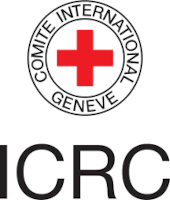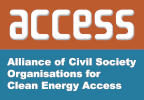Knowledge fuels change - Support energypedia!
For over 10 years, energypedia has been connecting energy experts around the world — helping them share knowledge, learn from each other, and accelerate the global energy transition.
Today, we ask for your support to keep this platform free and accessible to all.
Even a small contribution makes a big difference! If just 10–20% of our 60,000+ monthly visitors donated the equivalent of a cup of coffee — €5 — Energypedia would be fully funded for a whole year.
Is the knowledge you’ve gained through Energypedia this year worth €5 or more?
Your donation keeps the platform running, helps us create new knowledge products, and contributes directly to achieving SDG 7.
Thank you for your support, your donation, big or small, truly matters!
Energy Access in Displacement Settings
As of 2024, there were over 130 million people living in displacement as a result of conflict, persecution, or disaster, with nearly 33 million living as refugees, 7 million as asylum seekers and 63 million as internally displaced people (IDPs).[1] Access to food, water, shelter, and medical care are the immediate priorities for people who have been forcefully displaced from their homes, but energy is an important enabler for providing all of these basic life-saving services.
While displacement is often framed as a short-term emergency, the reality is that many refugees and IDPs spend years living in settlements may spend years—or even decades—in these spaces.[2] In protracted situations of displacement, energy access is essential for cooking, lighting, communication, healthcare, education, and safety. Energy access improves displaced people's livelihood opportunities, self-reliance, and resilience.
Energy Access in Displacement Settings Today
Despite its importance in both short-term and long-term displacement contexts, clean energy is still not adequately prioritized in the humanitarian response. Energy supply in the initial emergency response is often powered by fossil-fuel based systems, despite the availability, in many cases, of low-carbon alternatives which are more cost-effective, are environmentally friendly, and provide greater energy security, as there is no need for continuous fuel inputs.
While it is appropriate that access to modern energy is not a priority in the initial response, as time passes and the immediate emergency subsides, the lack of coordination around this topic can lead to the implementation of short-term, piecemeal solutions driven by the priorities of donors and mandates of individual humanitarian organisations and response clusters. This approach can hinder the development of sustainable energy delivery models to meet the needs of people living in fragile and displaced settings over the long term.
Cooking Energy
The limited data that is available suggests that at least 80% of displaced people living in refugee and internally displaced settlements today cook with firewood or other sources of biomass.[3] This dependency can have serious negative consequences, driving deforestation around settlements, causing tension with host communities, and exposing women and girls to high risks of gender-based violence during firewood collection. According to WHO, around 3.2 million people a year die prematurely from illnesses attributable to household air pollution, a major cause of which is inhaling smoke from open fires or inefficient stoves.[4] In environments where firewood is not readily available or affordable, people may also resort to burning waste, plastic, and other toxic materials for heat.
Lighting and Electricity
Electricity access in refugee and internally displaced settlements is extremely limited, with some estimates suggesting that close to 90% of refugees lack access.[3] Where they are accessible, kerosene lamps, solar lanterns, and mobile phone torches are often used due to a lack of alternatives. Without proper lighting, movement after dark becomes dangerous. Children can’t study at night, and small businesses can’t operate beyond daylight hours. Health clinics often operate without reliable power, limiting their ability to provide essential services like childbirth support or vaccine refrigeration.[5]
Environmental Impacts
The energy systems used in many settlements are not only inadequate but can also worsen situations of fragility. The vast majority of displaced people rely on biomass or fossil fuels, the consumption of which degrades air quality and local ecosystems. For example, in the Bidibidi refugee settlement in Uganda, wood fuel consumption reached over 300,000 tonnes in 2017 alone.[6] The resulting environmental degradation from firewood harvesting can drive tensions between displaced and host communities as well as worsen desertification in regions already under climate stress.
Financial Burden
Despite being among the poorest communities in the world, displaced people can pay high costs for energy relative to their income. Collectively, they are estimated to spend over $2 billion per year on inefficient energy solutions, often at inflated prices, due to lack of competition and formal markets.[7] While humanitarian agencies often distribute food rations to displaced people, cooking fuel is rarely included and so the cost must be borne by refugees themselves.[8] For example, one survey found that households in the Dadaab refugee complex in Kenya spend an average of 24% of their limited income on cooking fuel.[9] Where commercial sources of electricity are available, they may be pricey diesel generators. In many cases, the cost burden of procuring energy prevents families from meeting other essential needs.
Gender Inequities
Energy poverty disproportionately affects women and girls living in displacement settings. They may spend hours each day collecting fuel and may face safety threats while pursuing this drudge work.[8] Women are also more likely to spend time cooking over a fire, which poses threats to their respiratory health. More daytime hours time spent gathering and cooking with firewood translates into reduced opportunities to engage in education or income generating activities. Without access to energy, progress toward gender equity is severely constrained.
Technology Solutions for Clean Energy Access
While energy access in displacement settings remains inadequate, promising technology solutions are emerging, thanks largely to falling costs of renewable energy technology and joint public and private sector efforts to develop innovative solutions appropriate for humanitarian settings. Many humanitarian actors are also attempting to take a more holistic and longer-term approach to energy delivery in situations of fragility and displacement. A number of successful examples demonstrate that it is possible to deliver cleaner, more reliable, and more inclusive energy services to displaced communities. From clean cooking technologies to solar-powered infrastructure and integrated planning approaches, a growing number of interventions are proving effective when aligned with long-term needs and local systems.
Clean Cooking Solutions
Progress is being made in scaling up access to cleaner alternatives sources of cooking energy and fuel, such as improved cookstoves, LPG, ethanol, and solar-powered e-cooking technologies. For example, a large-scale initiative to distribute LPG in the Rohingya refugee settlements located in Cox's Bazar, Bangladesh implemented by UNHCR, IUCN, the Government of Bangladesh and other partners, led to an estimated 80% reduction in average household firewood demand in only a few years.[10] The Energising Development (EnDev) programme led by GIZ and RVO promotes the use of both e-cooking and improved cookstoves fuelled by biomass pellets in displacement contexts globally, such as Kakuma refugee settlement in Kenya.[11]
Lighting and Electricity Solutions
Many refugee and internal displacement settlements are not connected to national electricity grids due to their remote locations, temporary legal status, or policy barriers that restrict infrastructure investment. As a result, decentralized solutions are often the only viable way to provide electricity access. Solar lanterns and charging devices can provide basic electricity services, while higher capacity solutions, such as solar home systems and mini-grids, can enable widespread provision of energy services and related public services.
A mini-grid implemented by Alianza Shire in the Kobe refugee settlement in Ethiopia powers 16 public services for both displaced and host community members.[12] In healthcare, solar systems are increasingly used to power cold chains, lighting for night births, and equipment for diagnostics.[5] Technologies with productive uses, such as solar water pumps, can increase livelihood opportunities for people living in displacement.
Delivering Clean Energy Access for Displaced People
While clean energy technologies are becoming more accessible in displacement settings, scaling these solutions demands effective implementation strategies. This often means moving beyond the grant-based, free-distribution models that dominate humanitarian organisations' ways of working. It also requires integrating energy planning for the displaced into the broader development priorities of host countries and communities. As momentum has built around the humanitarian energy challenge and pilot projects have delivered measurable results, effective approaches have begun to emerge for achieving and sustaining long-term clean energy access for displaced people.
Market-Based Models
Both humanitarian agencies and the private sector are increasingly recognizing that displaced people are not just aid recipients, but potential customers and entrepreneurs. In some contexts, public and private partners have begun piloting market-based approaches to closing the energy access gap in displacement settings. Such models have the potential to reduce reliance on short-term grants in the context of declining humanitarian funding. They are also designed to leverage and strengthen existing local energy markets and supply chains, creating the conditions for long-term sustainable operations beyond the lifespan of individual projects.
In Mozambique, for example, IOM worked with local communities to co-design energy solutions that would meet their needs and partnered with C-Quest Capital, a consortium of public and private partners, for implementation.[13] IOM employed a blended, market-based approach that reduced financial risks for companies through subsidies, built local capacity for distribution and after-sales service, and stimulated demand through awareness campaigns and user training. As a result, the project helped catalyze local energy markets and laid the foundation for sustainable, long-term service delivery.
Inclusive and Integrated Energy Planning
Aligning humanitarian energy interventions with national and local development, energy, and climate priorities significantly increases the potential scope and likelihood of long-term success for projects. This approach enables more holistic and higher tier solutions by leveraging and building on existing infrastructure, policy frameworks, financing mechanisms, and operations and maintenance capacities. Critically, it creates a win-win scenario where investments benefit both refugee and host communities.
For example, in Uganda, efforts to include refugee-hosting areas in national energy planning—through initiatives such as the Electricity Access Scale-Up Project (EASP) and the Sustainable Energy Response Plan for Refugees and Host Communities (SERP)—have attracted funding and supported the development of projects focused on electricity access, productive use, and clean cooking for both displaced and host communities.[14] In southwest Somalia, IOM is partnering with the municipal government of Baidoa to implement renewable energy solutions that will both repair the city’s conflict-degraded power system and supply new electricity to IDPs living in the adjacent Barwaaqo settlement (GPA video; IOM story).[15][16]
References
- ↑ United Nations High Commissioner for Refugees (UNHCR). Global Appeal 2024. Geneva: UNHCR, 2023.https://reporting.unhcr.org/global-appeal-2024-6383.
- ↑ USA for UNHCR. "Protracted Refugee Situations Explained." USA for UNHCR. Accessed April 23, 2025. https://www.unrefugees.org/news/protracted-refugee-situations-explained/.
- ↑ 3.0 3.1 Global Platform for Action on Sustainable Energy in Displacement Settings (GPA). The State of the Humanitarian Energy Sector: Challenges, Progress and Issues in 2022. Geneva: UNITAR Publishing, 2022. https://www.humanitarianenergy.org/assets/resources/SOHES.pdf.
- ↑ World Health Organization. "Household Air Pollution and Health." World Health Organization. Last updated December 15, 2023. https://www.who.int/news-room/fact-sheets/detail/household-air-pollution-and-health.
- ↑ 5.0 5.1 Archimi, Jonathan, Shahaab Javeri, and Katherine Patterson. Briefing on Healthcare Electrification in Humanitarian Settings. Geneva: UNITAR, 2025. https://www.humanitarianenergy.org/assets/resources/Briefing_on_Humanitarian_Health_Facility_Electrification.pdf.
- ↑ UNHCR. "FAO and UNHCR Launch New Tool to Save Forests in Displacement-Affected Areas." UNHCR, June 20, 2018.https://www.unhcr.org/news/news-releases/fao-and-unhcr-launch-new-tool-save-forests-displacement-affected-areas.
- ↑ Lahn, Glada, and Owen Grafham. Heat, Light and Power for Refugees: Saving Lives, Reducing Costs. London: Chatham House, the Royal Institute of International Affairs, 2015. https://www.chathamhouse.org/sites/default/files/publications/research/2015-11-17-heat-light-power-refugees-lahn-grafham-final.pdf.
- ↑ 8.0 8.1 Global Alliance for Clean Cookstoves. Igniting Change: A Strategy for Universal Adoption of Clean Cookstoves and Fuels. Washington, DC: United Nations Foundation, 2011. https://cleancooking.org/binary-data/RESOURCE/file/000/000/458-2.pdf.
- ↑ Lahn, Glada, and Owen Grafham. "Energy Access and Forced Migration." Energy Research & Social Science 27 (2017): 117–123. https://www.sciencedirect.com/science/article/pii/S2211467X16300396.
- ↑ World LPG Association. "The Greening of Cox’s Bazar – The Positive Impact of Liquified Petroleum Gas (LPG) Distribution Among the Refugee and Host Communities." World LPG Association, January 13, 2020. https://www.worldliquidgas.org/news/the-greening-of-coxs-bazar-the-positive-impact-of-liquified-petroleum-gas-lpg-distribution-among-the-refugee-and-host-communities/.
- ↑ EnDev and SNV Netherlands Development Organisation. Behavioural Change Campaign: Promoting Improved Cooking Solutions in Kakuma Refugee Camp – Key Research and Implementation Findings. April 2022. https://endev.info/wp-content/uploads/2022/05/EnDev_Behavioural-change-campaign_Kakuma_Refugee_Camp.pdf.
- ↑ Alianza Shire. "Alianza Shire Begins Deploying Solar Mini-Grid in Kobe Refugee Camp." Alianza Shire, July 2, 2024. https://alianzashire.org/en/alianza-shire-begins-deploying-solar-mini-grid-in-kobe-refugee-camp/.
- ↑ Matthey-Junod, Anaïs. Toolkit for Clean Energy Access in Displacement Settings: New Approach to Building a Participatory and Inclusive Marketplace for Sustainable Energy Solutions. Geneva: International Organization for Migration, 2024. https://publications.iom.int/system/files/pdf/pub2024-092-r-toolkit-clean-energy-displacement-settings-en.pdf.
- ↑ Täuber, Megan, Philip Sandwell, and Epa Ndahimana. A Roadmap for Energy Access in Displacement Settings: Uganda. Geneva: UNITAR, 2023. https://www.humanitarianenergy.org/assets/resources/Compress_Uganda_READS_report.pdf.
- ↑ Global Platform for Action on Sustainable Energy in Displacement Settings (GPA). Delivering Energy Access in Urban and IDP Settings. Video of session from the Humanitarian Energy Conference 2024, Nairobi, Kenya, October 7, 2024. YouTube video, 1:44:55. Posted by “Humanitarian Energy,” October 10, 2024. https://www.youtube.com/watch?v=nvb9ILRDjNA.
- ↑ International Organization for Migration (IOM) Somalia. "A Journey to Dignity: The Transformative Story of Barwaaqo Northern Extension." IOM Somalia, March 22, 2025. https://somalia.iom.int/stories/journey-dignity-transformative-story-barwaaqo-northern-extension.



















